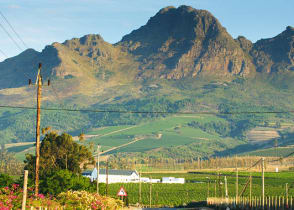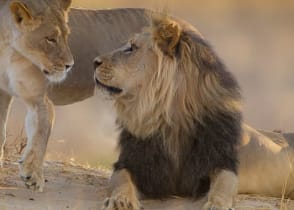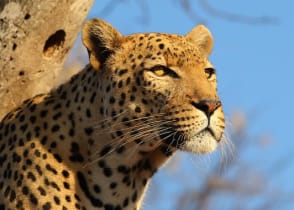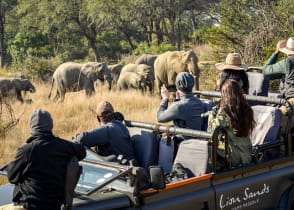Top 15 Animals of South Africa and Where to See Them

Cheetahs in the Kalahari Game Reserve, South Africa
South Africa is a wild and wonderful destination for wildlife. Here, we have selected the country’s top 15 animals and where you can see them. For optimum game viewing, consider the cooler months of May through September for your safari.
South Africa offers one of the world’s most comprehensive safari experiences, the wide variety of iconic animals creating an unparalleled, intimate experience, whether you witness the Big Five or enjoy sensational views of the landscape from the comforts of your lodge.
From big cats to antelope, the diverse range of wildlife captures natural beauty that’s enhanced by dramatic settings. Here are just some South African animals you may encounter during your safari as you indulge in a rich connection with the wonders of nature.
1. Lion
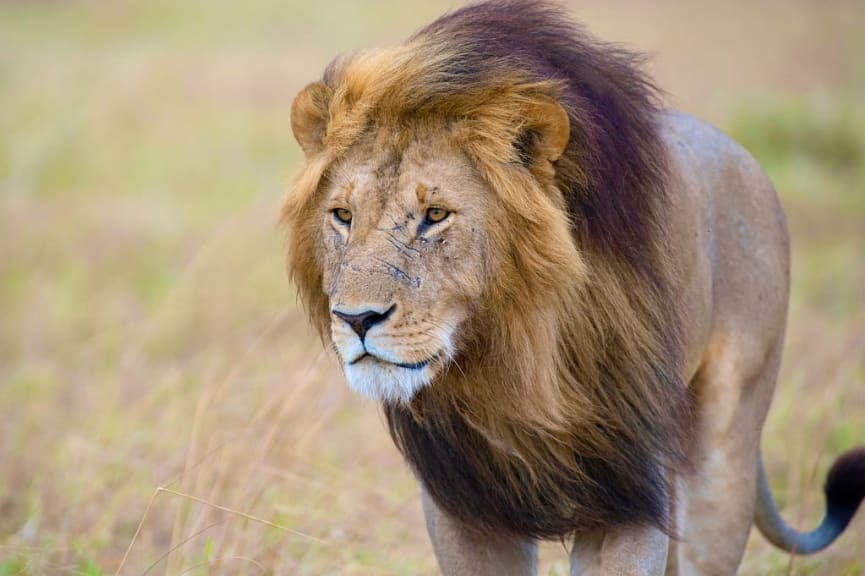
Kruger National Park, South Africa
Spend a few days on safari and the landscape is bound to reveal the power and prowess of the mighty lion. These majestic animals can be found in most parks and reserves across South Africa.
A lion is one of the most iconic animals in South Africa, and these kings and queens of the bush immediately spring to mind when considering a classic safari experience. Blending into the grass or resting beneath a shady bush, coming across these magnificent animals is always exciting.
Pride numbers range from park to reserve and having the privilege of riding alongside females on a hunt or watching cubs at play is spectacular. Your chances of spotting lions in South Africa are excellent on our Kruger National Park safaris.
Where to See Lions: Kruger National Park • Sabi Sands Game Reserve • Timbavati Game Reserve • Madikwe Game Reserve • Hluhluwe-iMfolozi Park • Shamwari Private Game Reserve • Kgalagadi Transfrontier Park
2. Leopard

Sabi Sands Game Reserve, South Africa
Like lions, leopards are found across South Africa and their elusive habits make them that much more mysterious.
Their intelligence is matched by power and they effortlessly camouflage into their surroundings, earning them the title of most elusive.
You can find them resting in a beautiful acacia tree or lazing alongside the road, their markings mesmerizing, their demeanor pensive.
Where to See Leopards: Kruger National Park • Karoo National Park • Sabi Sands Game Reserve • Londolozi Game Reserve • Timbavati Game Reserve • Madikwe Game Reserve • Kalahari Gemsbok National Park
3. Elephant

Addo Elephant Park, South Africa
Elephants are often referred to as “gentle giants”, remarkable examples of grace and power. They roam the various landscapes of South Africa’s safari regions, their gray outlines seen for miles.
Elephants feed on the bounty of trees, which naturally lures them to woodland and denser savanna, leaving evidence across vast plains marked by uprooted trees or forests gaping with open pathways.
They are continuously on the move, following the matriarch, which generally makes it easy to find the herd. Safari-goers can watch their antics for ages as they practice rituals that have come to fascinate us.
Where to See Elephants: Kruger National Park • Greater Addo Elephant National Park • Knysna Elephant Park • Hluhluwe-iMfolozi Park • Sabi Sands Game Reserve • Timbavati Game Reserve • Madikwe Game Reserve
4. White Rhino

Hluhluwe-Imfolozi Park, South Africa
The white rhino, actually gray in appearance, gets its name from the Afrikaans word “wyd” or “wide”, referring to the shape of its mouth. White rhino are a spectacle to behold, gracious exemplars of Africa's natural splendor. They measure around four meters and weigh over two tons.
Their straight lip indicates they are grazers, preferring the grasslands and savannas found across South Africa. They aren’t shy and are generally unperturbed by your presence.
Communicating with each other in snorts and grunts, these much-loved animals use sounds and smells to read their surroundings, their poor eyesight not deterring them as they roam the land at a leisurely pace.
Where to See White Rhinos: We believe in protecting these highly endangered animals and do not provide their list of locations to help preserve their presence for future generations.
5. African or Cape Buffalo
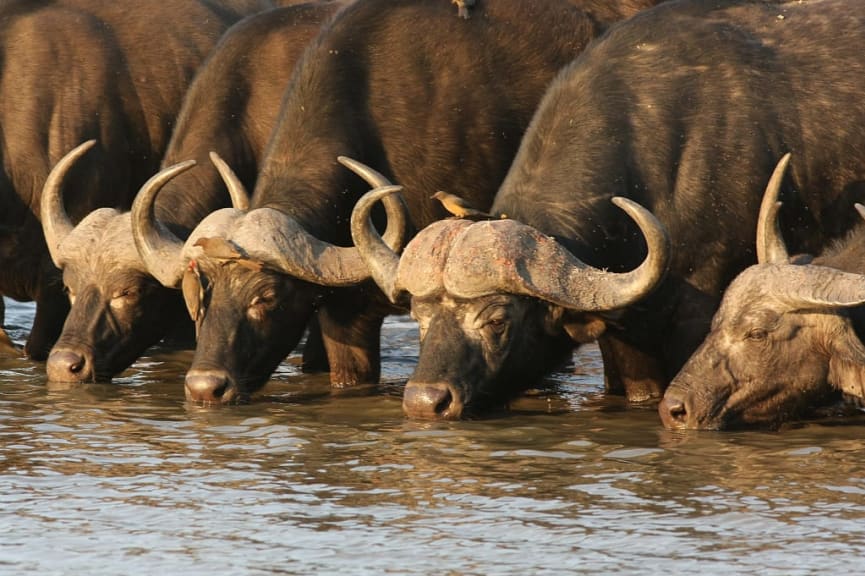
Kruger National Park, South Africa
Found in small and large herds, these somewhat stern-looking animals command attention and respect in the bush.
They have a symbiotic relationship with their surroundings and prefer the long grasslands of the South African bushveld. Their horns are impressive, with the bulls presenting a heavier boss, their horns curving upwards, their weight up to a ton.
A buffalo will often come to the rescue of another herd member if necessary, displaying a true sense of community. Spotting this intriguing member of the Big Five is always welcome and you could do so on Western Cape safaris made possible as extensions of our Cape Town vacations.
Where to See Buffalos: Kruger National Park • Sabi Sands Game Reserve • Timbavati Game Reserve • Madikwe Game Reserve • Hluhluwe-Imfolozi Park • Lalibela Game Reserve
6. Giraffe
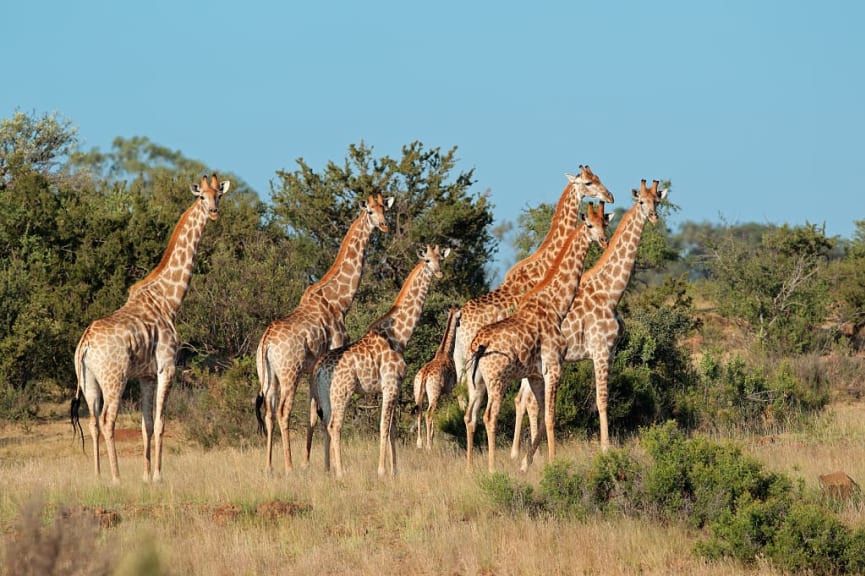
Sabi Sands, South Africa
The giraffe is another iconic African animal and one many cannot wait to see when embarking on a safari. They ascend above the landscape with grace, their heads poking above the woodlands and their long necks visible for miles.
While giraffes exude tranquility, they are not easy prey. Their strong hind legs make only the babies realistic targets for predatory cats. They can stand over 16 feet tall, their necks providing access to the landscape's towering trees.
On a walking safari, they seem even taller as they ever so quietly make their way from one grazing location to another in every South African game reserve or park.
Where to See Giraffes: Kruger National Park • Sabi Sands Game Reserve • Timbavati Game Reserve • Greater Addo Elephant Park • Shamwari Game Reserve • Tsitsikamma National Park • Kariega Game Reserve • Phinda Private Game Reserve
7. Cheetah

Madikwe Game Reserve, South Africa
Beautiful, elegant, and quietly on watch, cheetahs can be seen in several South African reserves. Regal in stature, they are built for speed, notably the fastest mammal on Earth.
You will often find cheetahs resting under small bushes or in the grass in open savannas, seemingly unphased by your presence. Open safari vehicles can follow these sleek animals for miles as they move from one part of the reserve to another. Hunting at dusk, their food of choice is small antelopes.
Where to See Cheetahs: Kruger National Park • Sabi Sands Game Reserve • Phinda Private Game Reserve • Madikwe Game Reserve • Timbavati Game Reserve • Lalibela GameReserve • Hluhluwe-Imfolozi Game Reserve
8. African Wild Dog

Kruger National Park, South Africa
The African wild dog is virtually extinct, but South Africa is home to several havens, where the dogs live in large packs.
Ravenous hunters, they represent the wild world of yesteryear as they bare teeth and show an appetite for marauding across the savanna.
Shabby and wide-eyed, the pack creates a surreal and understated beauty that generally shows little similarity to a domesticated pet, yet there's something intriguing and playful about them, within a pack and the environment.
Where to See African Wild Dogs: Hluhluwe-Umfolozi Game Reserve • Kruger National Park • Madikwe Game Reserve • Tswalu Kalahari Reserve
9. Hyena

Timbavati, South Africa
These entertaining animals are a delight to spot. While some think the hyena is related to a dog, it’s more closely related to cats.
Some say ugly, some say cute, but the way they move, with their howling call and giggle, is fascinating. They live in territorial clans and protect their homes at all costs, with females the dominant sex.
Overall, the hyena is a proud scavenger who rarely goes hungry, patiently waiting for predators to move away from their kill.
Where to See Hyenas: Kruger National Park • Kalahari Gemsbok National Park • Phinda Private Game Reserve • Thanda Game Reserve• Timbavati Game Reserve
10. Zebra

South Africa
While these sweet animals can be seen in many parts of the world, there is something about spotting a zebra on open African plains that never gets old.
Drinking from a watering hole or grazing on a grassy patch, they stand strong and bold against their savanna backdrop. Social animals, zebras live in family groups of up to 20 and are often found on game drives.
Black with white stripes or white with black stripes, you decide. Either way, the zebra is a must-see when on safari.
Where to See Zebras: Kruger National Park • Sabi Sands Game Reserve • Welgevonden Park • Hluhluwe-Imfolozi Park • Timbavati Game Reserve • Madikwe Game Reserve • Greater Addo Elephant Park
11. Impala

Kruger National Park, South Africa
Known as the “McDonalds of the bush”, these beautiful buck are scattered all over the safari reserves of South Africa. They are graceful and agile, and can spring and run at amazing heights and speeds.
Their horns are impressive and a male can have several females in his harem. They make for easy prey, but also sound an alarm when danger is present to help them make a quick escape.
Impala may not be one of the Big Five or high on anyone’s safari list, but these beautiful and cute animals decorate the landscape of private reserves and national parks you can visit on luxury South Africa safaris.
Where to See Impalas: Kruger National Park • Sabi Sands Game Reserve • Welgevonden Park • Hluhluwe-Imfolozi Park • Timbavati Game Reserve • Madikwe Game Reserve • Greater Addo Elephant Park
12. Kudu

South Africa
The kudu is a large antelope that can be found wandering among the acacia trees, their impressive twisted horns marking out a kudu bull, while females present a more brown hue.
Their striped body provides camouflage in the shrubs and trees, meaning you will rarely see them roaming in the open. They tend to be shy, yet often stand perfectly still, as if posing for the camera.
You will find kudu in parks and reserves all across South Africa, including bachelor groups that stun as they lock horns and push heads in a tentative display of strength.
Where to See Kudus: Kruger National Park • Sabi Sands Game Reserve • Timbavati Game Reserve • Kapama Private Game Reserve • Madikwe Game Reserve • Hluhluwe-Imfolozi Park • Greater Addo Elephant Park
13. Warthog

Kruger National Park, South Africa
Fascinating and funny creatures, the warthog is a delight to spot. You cannot help but laugh when you watch them run with their tails in the air.
A good snack for lions, leopards, and crocodiles, to name a few, they are always alert. Wallowing in mud is one of their favorite activities and they live in abandoned aardvark burrows.
They have a keen sense of smell, alerting them to nearby predators, and are adaptable to change, hence known as one of the more populous species.
Where to See Warthogs: Kruger National Park • Sabi Sands Game Reserve • Timbavati Game Reserve • Kapama Private Game Reserve • Madikwe Game Reserve • Hluhluwe-Imfolozi Park • Greater Addo Elephant Park • Kwandwe Game Reserve
14. Meerkat

Tswalu Kalahari Reserve, South Africa
The meerkat presents an iconic image of a small, brilliant, and somewhat mischievous predator in South Africa’s untamed wilderness.
Typically found in the arid desert landscape among the sands and dry savanna between South Africa and Botswana, they are considered part of the “shy five”, a term that describes their disposition and elusive behavior.
They essentially burrow beneath the surface and build underground networks for colonies as large as 30, feeding on insects and scorpions.
Where to See Meerkats: Kgalagadi Transfrontier Park • Tswalu Kalahari Reserve
15. Gemsbok

Kalahari Desert Region, South Africa
Also known as the “South African oryx”, these gray-brown antelopes have impressive ringed horns that can grow to almost a meter in length. Like a tree, their horns rise straight and true, with dignified markers signifying an individual's age and status.
The species is an ode to adaptation in desert conditions, as they are able to roam for long distances without water in landscapes you may have thought were desolate, giving them an easy home across the drier areas of the country.
They typically feed on coarse grasses and browse through thorny shrubs, and are often found in arid areas.
Where to See Gemsbok: Kgalagadi Transfrontier Park • Camdeboo National Park
Spot the Top Animals of South Africa on Safari
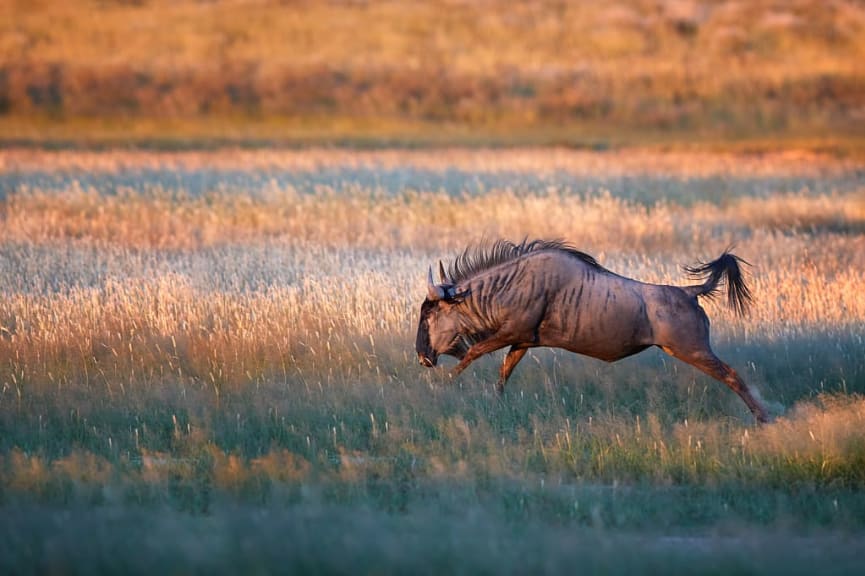
Kgalagadi Transfrontier Park, South Africa
South African wildlife is an incredible representation of adaptability in untouched environments, allowing you to find immersion in myriad wilderness experiences. From lion prides to elephant herds, grazing giraffes to laughing hyenas, by knowing what you want to see, you can better understand the best time for a South Africa safari.
Find helpful tips and more information with Zicasso’s South Africa travel guide or speak with a South Africa travel specialist who will help you plan your unique experience, with inspiration found on our South Africa safaris.
Life-Enriching Travel Designed Just for You
- 1
Trips curated by the world’s top destination experts
- 2
Concierge-level service leading up to and during your trip
- 3
Unique, exclusive experiences and insider access

